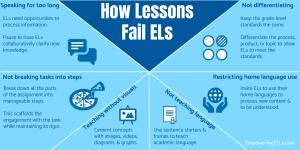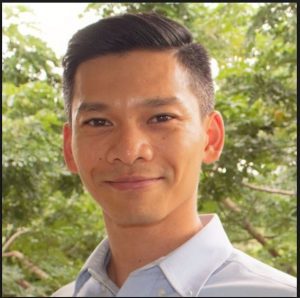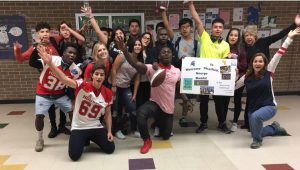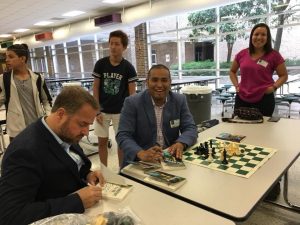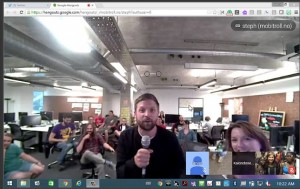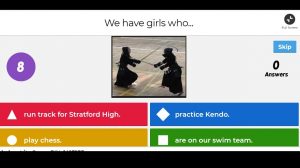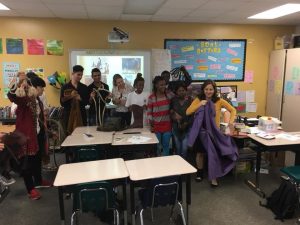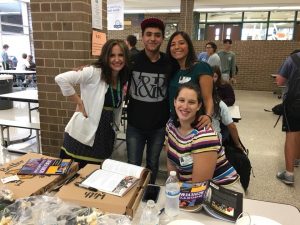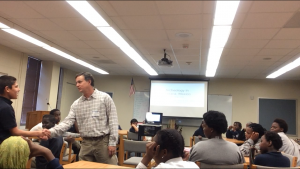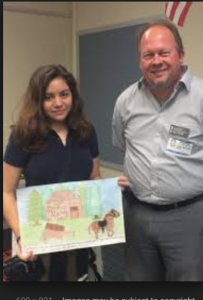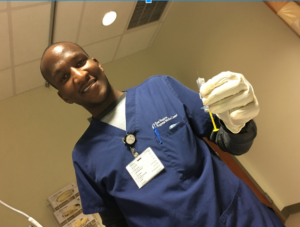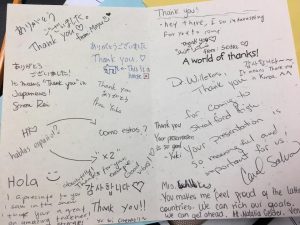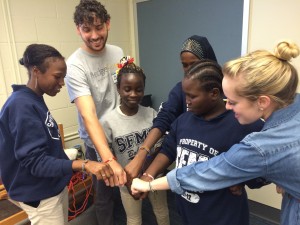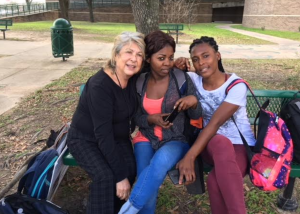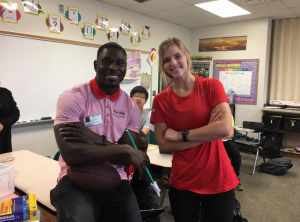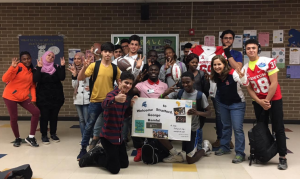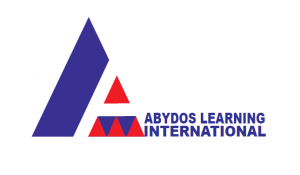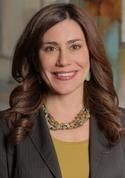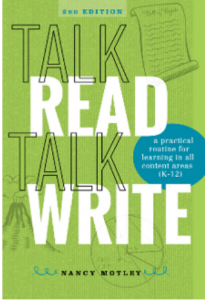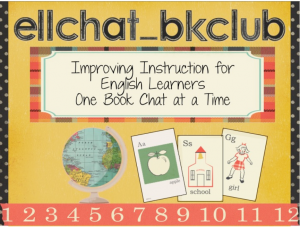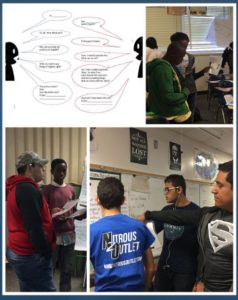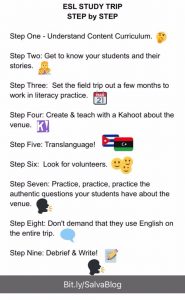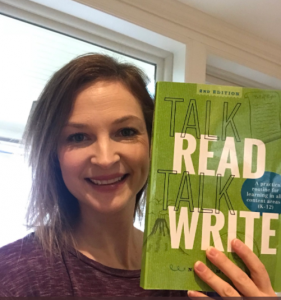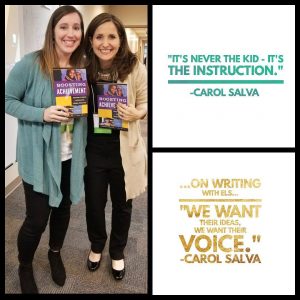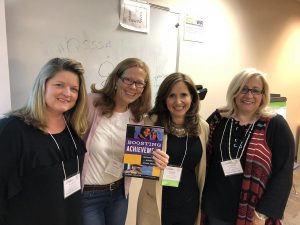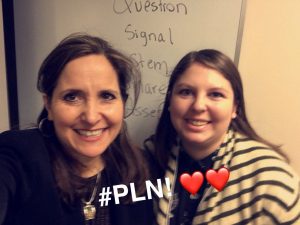You’ve never presented before? That is perfect! This is your chance to do something brave. If you present all the time, you should be there as well. We will have a great day of sharing with and learning from a global network of educators.
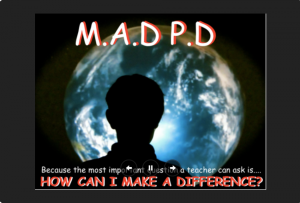 Emily Francis, Derek Rhodenizer and Peter Cameron join me this week on the podcast to answer all you want to know about the event. You can listen to that show right here:
Emily Francis, Derek Rhodenizer and Peter Cameron join me this week on the podcast to answer all you want to know about the event. You can listen to that show right here:
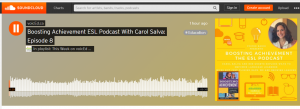 I feel strongly that we should ALL be presenting at this conference! If you are apprehensive, just take the leap! This is our chance to practice what we are preaching to our students or the teachers that we support. We ask them to take risks every day. Let’s put ourselves out there too. Let’s take a risk and share something that Makes a Difference in education.
I feel strongly that we should ALL be presenting at this conference! If you are apprehensive, just take the leap! This is our chance to practice what we are preaching to our students or the teachers that we support. We ask them to take risks every day. Let’s put ourselves out there too. Let’s take a risk and share something that Makes a Difference in education.
Truth be told, it’s not even very much of a risk. YouTube Live is the platform and it is just a matter of watching a short “How To” video if you don’t know how to launch a Live broadcast. And the founders have you covered! They have short videos for us!
So in this podcast, Emily helps me interview Derek and Peter, who are the founders of #MADPD. The three of those folks are excellent members of any PLN, by the way, so be sure to follow them.
Here is the link so you can go ahead and submit that proposal! 

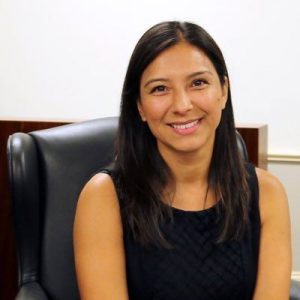 Basically, #MADPD is an all day, online education conference that is happening May 6th. It is the 2nd annual conference and should be bigger and better than ever. The first #MADPD had over 60 presenters from around the world and those videos are still being played on demand and will continue to be out there for people to use. Isn’t it amazing that we can be sharing with the world??
Basically, #MADPD is an all day, online education conference that is happening May 6th. It is the 2nd annual conference and should be bigger and better than ever. The first #MADPD had over 60 presenters from around the world and those videos are still being played on demand and will continue to be out there for people to use. Isn’t it amazing that we can be sharing with the world??
I appreciate Emily Francis helping me interview the guys because she is a great teacher to represent the ESL community. If you have listened to my show, you know that I mention Emily all the time. She has her own immigration story that will inspire you and your students. Emily has some great questions and then gives us her take on why teachers of ELs should be presenting at this innovative conference. One of my favorite reasons she mentions is that we all need to be advocating for our English learners. If you have an idea that will help other teachers that work with English learners, you are advocating for those students and for the teachers that teach them.
 The founders impress upon us that they are looking for teachers who are new to presenting. This is the type of opportunity that will offer value to all of us. We all have something that is making a difference. You may think that something you are doing is known by everyone, but that just isn’t the case.
The founders impress upon us that they are looking for teachers who are new to presenting. This is the type of opportunity that will offer value to all of us. We all have something that is making a difference. You may think that something you are doing is known by everyone, but that just isn’t the case.
Derek makes some great points about why this is especially cool for presenters. One example is that everything is YouTube based on our own channels so presenters retain the rights to the videos.
I love this effort because it is purely to help each other become better educators. We all have a wonderful opportunity to learn so much from this event. I know I’ll be trying to get better at a YouTube live chat this time around and that is just one benefit. There will be so many presentations and I’m thrilled to have access to them all.
I hope you have a chance to listen to the show. Thanks to Peter, Derek and Emily for helping us break this down for teachers of ELs.
One final note!
We don’t just have a moral imperative to share. We have a moral imperative to GET GOOD at sharing! – Dave Burgess on the Ed Podcast
I am thinking that Dave is on to something here. So hurry and get your proposals in. You are guaranteed to get it accepted.
See you on May 6th!
Carol
PS: Would you like more support? I’d love to come work with you and your staff! Simply reach out to me or Kathy Belanger: kathy@johnseidlitz.com
In the near future I will be presenting at the NABE conference,
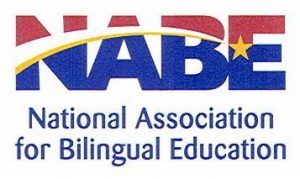 as well as the ISTE conference
as well as the ISTE conference  and I’m a proud spotlight speaker at the Abydos writing conference.
and I’m a proud spotlight speaker at the Abydos writing conference.
I’m attending SXSW as well so please reach out if you’ll be at any of these!
You can also join me for two upcoming workshops in Texas. The information for those is below. We’d love to see you!
